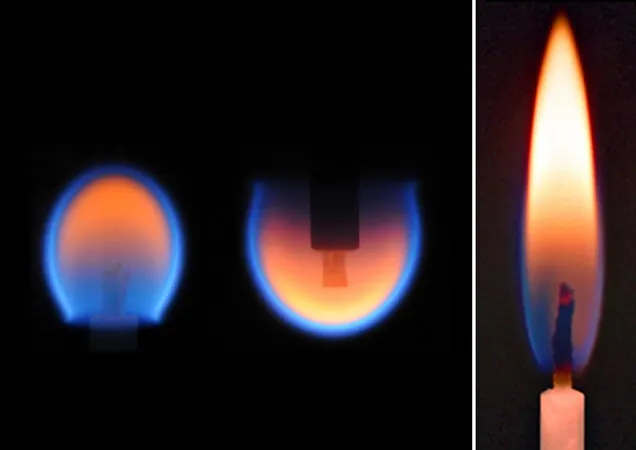
Flames in Space: The Surprising Science Behind Fire in Microgravity
2025-04-18
Author: Wei Ling
While it's common knowledge that fire can't ignite in the vacuum of space due to a lack of oxygen, what many don't realize is that flames behave in utterly unique ways when they do have the right conditions to spark up—like inside a spacecraft where oxygen is readily available.
The Unique Dance of Flames in Microgravity
At first glance, a fire in space may seem like an otherworldly spectacle, and that’s because it truly is! Unlike the familiar, teardrop-shaped flames we observe on Earth, flames in a microgravity environment take on a perfectly spherical shape. This transformation is a result of gravity's absence, which plays a critical role in how fire behaves.
Why Gravity Matters for Flames
On Earth, gravity causes hot air—being less dense—to rise above the cooler air, creating convection currents that feed the flame with fresh oxygen. However, in the microgravity of space, hot air does not rise; instead, it wraps around the flame, limiting its temperature and lifespan. Without the natural flow of air, flames struggle to sustain themselves and may even be choked by their own exhaust.
Hollywood vs. Reality
Remember that intense scene in the movie "Gravity" where Sandra Bullock's character faces an out-of-control blaze aboard the International Space Station? While thrilling on screen, in reality, such a fire would not behave that way. Fire extinguishing technology, like CO2 systems, might work, but it would need to be specially designed for the peculiar challenges of a microgravity environment.
Scientific Discoveries at the Edge of Space
Astronauts on the International Space Station have conducted real-life experiments to better understand how fire operates in weightlessness. These studies delve into the chemical reactions during combustion and how weightless conditions redefine our understanding of flame dynamics. The findings are vital not just for astronaut safety but also for understanding combustion processes that could have significant implications back on Earth.
Curious to learn even more? Check out NASA's insights and footage on this incredible phenomenon!

 Brasil (PT)
Brasil (PT)
 Canada (EN)
Canada (EN)
 Chile (ES)
Chile (ES)
 Česko (CS)
Česko (CS)
 대한민국 (KO)
대한민국 (KO)
 España (ES)
España (ES)
 France (FR)
France (FR)
 Hong Kong (EN)
Hong Kong (EN)
 Italia (IT)
Italia (IT)
 日本 (JA)
日本 (JA)
 Magyarország (HU)
Magyarország (HU)
 Norge (NO)
Norge (NO)
 Polska (PL)
Polska (PL)
 Schweiz (DE)
Schweiz (DE)
 Singapore (EN)
Singapore (EN)
 Sverige (SV)
Sverige (SV)
 Suomi (FI)
Suomi (FI)
 Türkiye (TR)
Türkiye (TR)
 الإمارات العربية المتحدة (AR)
الإمارات العربية المتحدة (AR)